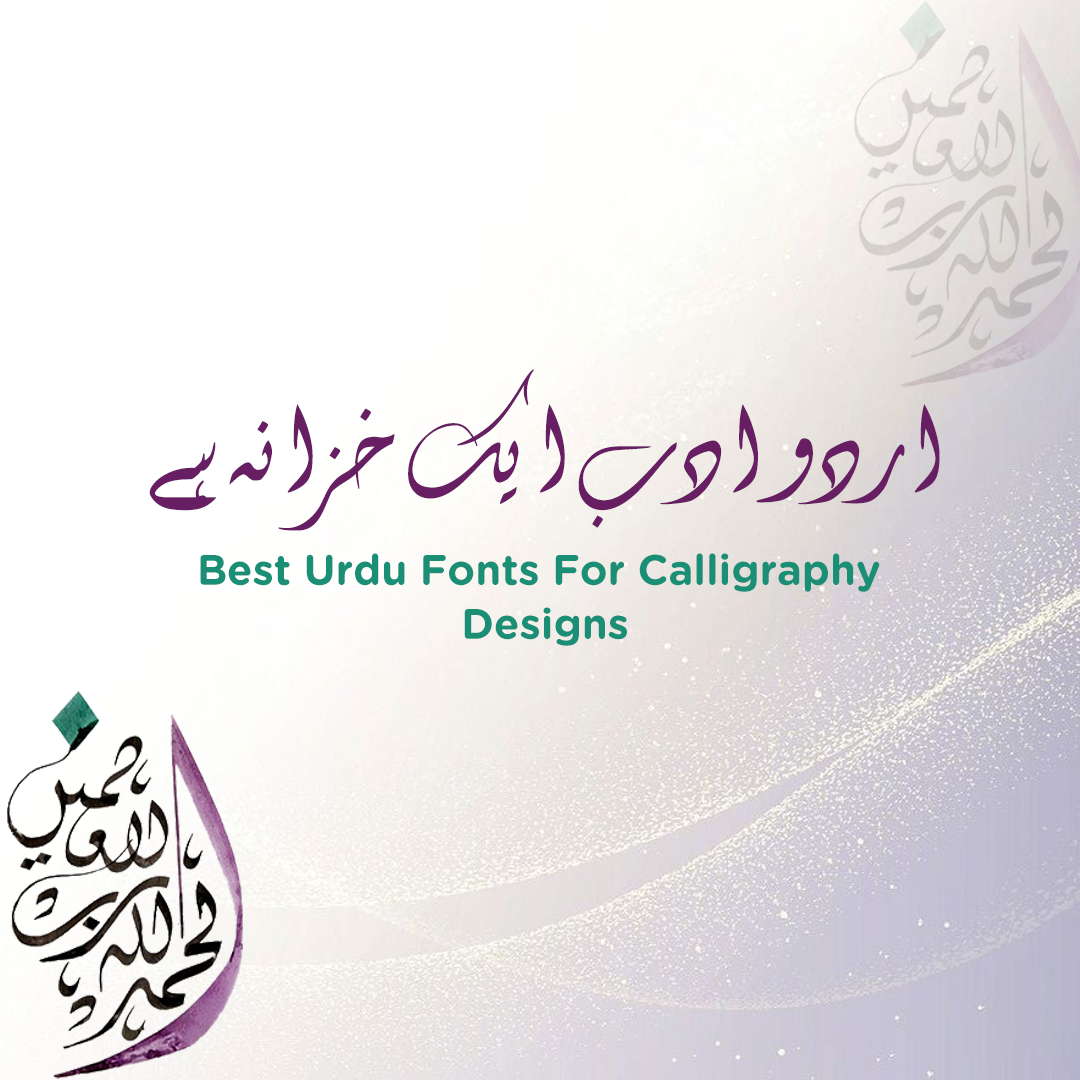Urdu Fonts play a crucial role in the design of your educational software or website. They evoke feelings, set the mood, and assist users to form an opinion before they proceed to read the written text. The fonts you will use serves as secret representatives of visual communication that work with users’ subconscious mind. Remember that Urdu fonts have a delicate but strong effect on how online readers see, react to, learn, and interact with online content.
However, mostly designers ignore the right selection of Urdu fonts while designing their learning website or software. Furthermore, they give personality to a body of text or website. Almost all online course content utilizes text, that’s why the Urdu fonts you use to present your data impact the student’s initial insights of that content. In this blog, we will discuss about the Best Urdu Fonts That Are Used in Educational Software’s. Moreover, check out our Urdu Fonts for Publishing educational books and formal documents.
Top Urdu Fonts for Educational Material to Captivate Students
It is an undeniable fact that Urdu fonts are mostly overlooked while designing any educational or learning software. Keep in mind that it is extremely important to use an appropriate and right font to engage learners and boost their learning. While selecting a font, you have to take care of certain factors like its weight, width, overall appearance, and much more, Different types of Urdu fonts to use in designing your educational software are as follows:
| Sr. | Font Name | Font Designer | Description |
|---|---|---|---|
| 1 | Adobe Arabic Shin | Adobe & Shahin Sabbaghi | Bold and wide appearance. Available in two styles: SHΙΝ Stout Bold (condensed) and SHΙΝ Typo Bold (open and legible Naskh design). |
| 2 | Al Fars 17 Jadid | Syed Irtiza Hassan Rizvi | Bold Arabic font with even spacing, simplified letterforms, and bold strokes with slightly geometric elements. Good for titles and headings. |
| 3 | Hisham LT | Ahmed Maged | Modern Arabic font with strong baseline, slanted diagonals, and bold vertical strokes. Compact font for headlines. Good for short texts. |
| 4 | Sarem BD-Kasheeda | Sarem Muhammad Bux Kalady | Modern flair with classic appeal. Available in a single weight. Perfect for headings and statements. |
| 5 | XB Shafigh | Behnam | Pointy, flowing Arabic typeface inspired by Nastaliq script. Geometric, modern design with high legibility. Available in four styles: Regular, Bold, Italic, and Bold Italic. |
| 6 | Anwar | Syed Manzar Hasan Zaidi | Inspired by traditional Naskh style. Stylish design with symmetrical letters. Good for various applications. |
| 7 | Urdu Khat-e-Naqsh Nastalique | Shehzad Ashiq Ali | Attractive Urdu font with slanted, wide letters in classic Nastaliq style. Good for longer text. |
| 8 | Nafees | Mr. Jamil-ur-Rehman | Contemporary Urdu font inspired by classic Naskh style. Thick strokes and clean look. Good for longer text paragraphs. |
| 9 | Ahmed | Syed Manzar Hasan Zaidi | Elegant look and modern influences of the Naskh style. Elongated letterforms with soft corners. Good for formal documents, invitations, signage, etc. |
| 10 | Sarem Marjan | Sanaullah Mangnejo Sarem | Slanted and elegant Sindhi font with pointy letterforms. Inspired by historical Nastaliq and Naskh scripts. Good for both short and long texts. |
| 11 | Kaneez | Syed Manzar Hasan Zaidi | Modern Arabic font for Qalam writing. Monospaced font with moderate thickness. Good for longer text passages. |
Adobe Arabic Shin
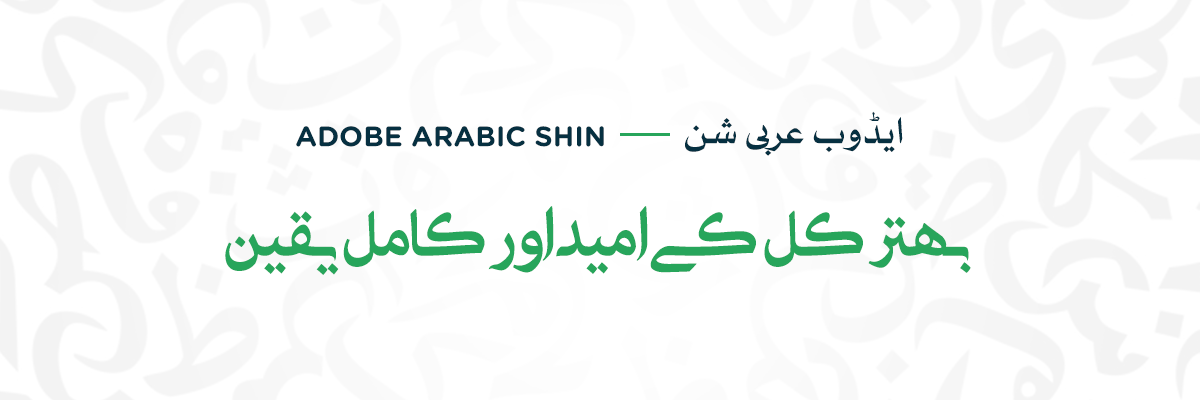
The Adobe Arabic Shin is a wide Urdu font that was created by Adobe and Shahin Sabbaghi and is widely used because of its bold and wide appearance. It was launched in 2018 and is available in two different styles. SHIN Stout Bold has filled zero spaces and is more condensed while SHIN Typo Bold is a more open as well as highly legible Naskh design. With changing thicknesses & solid strokes, it has dynamic and beautiful appearance. Furthermore, the delicate, flowing appearance with pointy edges make it perfect for titles.
Al Fars 17 Jadid – Bold Urdu Font for Educational Material
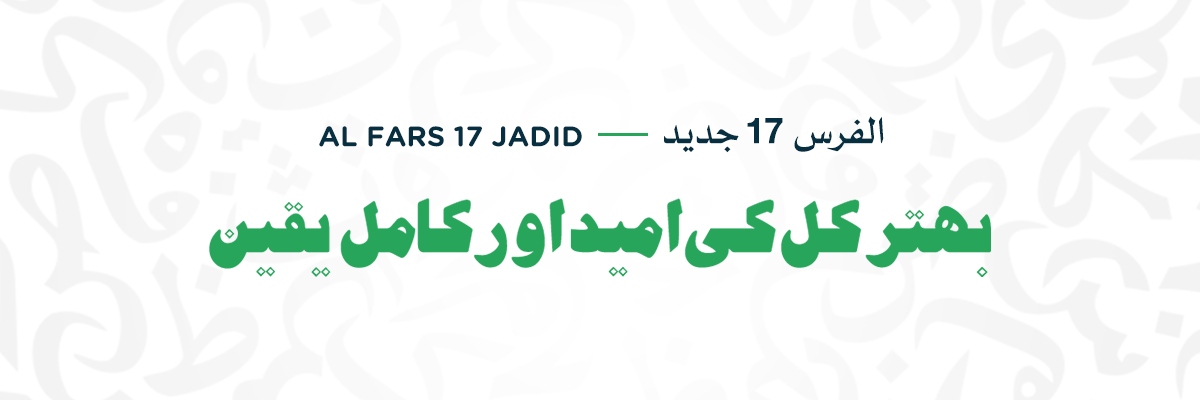
Launched in 2016, Al Fars 17 Jadid was made by Syed Irtiza Hassan Rizvi inspired by the classical Naskh style with a modern touch. It is also a bold Arabic font that has even spacing, simplified letterforms, and bold strokes with slightly geometric elements. The thick strokes as well as pointy angles of the font capture attention of viewers, making it a good option for titles and headings of your educational software. Even though it is available in a single font weight, but its huge character set and glyphs can support Urdu, Arabic, and Latin scripts, guaranteeing compatibility as well as versatility for text in learning software or site.
Hisham LT
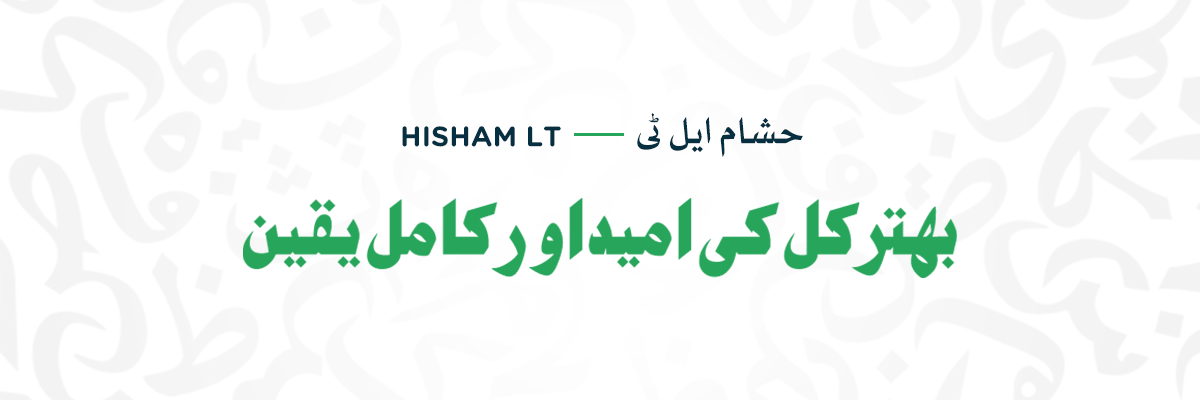
Hisham LT is a modern Arabic font made by Ahmed Maged, a Lebanese calligrapher. The font has a strong baseline with slanted diagonals and bold vertical strokes. It is a compact font that adds a fresh style to Arabic headline collection of Linotype. With Latin glyphs from Optima Extra Black, the font allows smooth text writing in both Arabic and Western European languages. Moreover, its strong strokes and constant thickness are perfect for short texts in a learning software. However, its availability in single weight and condensed look at smaller resolutions can lead to legibility challenges. Naskh is the most simplest form of calligraphy, if you want to know more about it, check out Origin of Naskh Calligraphy and how it reach and thrive in Middle East?
Sarem BD-Kasheeda
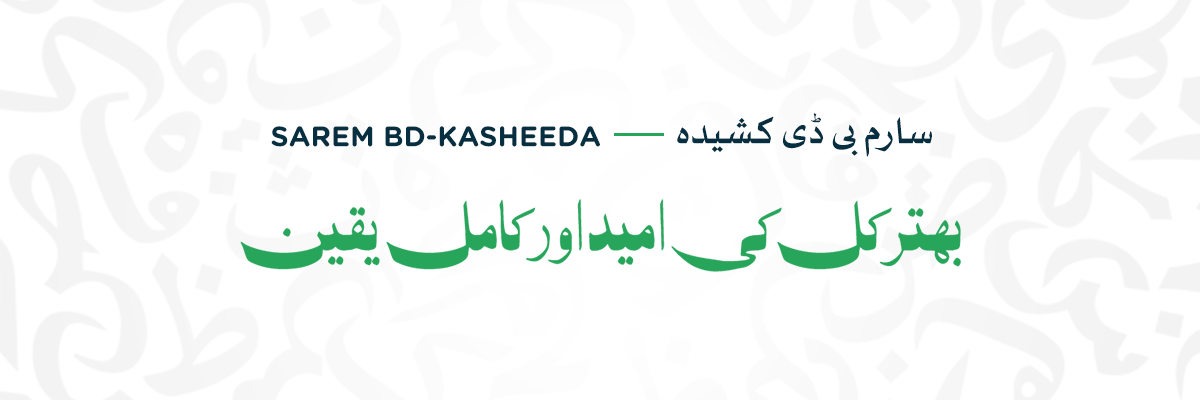
Designed by Sanaullah Manganejo Sarem, Sarem BD-Kasheeda is a Sindhi font that was released in 2015. It has filled characters, pointy edges, as well as widely spaced characters which adds a modern flair while maintaining the classic appeal of traditional calligraphy. The font is available in a single weight and is perfect for attractive headings and statements, specifically in educational websites. Moreover, the high legibility makes it best for short texts. Having 613 glyphs, the font can support the Urdu, making it a multipurpose option for artistic and design projects.
XB Shafigh – Top Font Choice for Urdu Educational Materials
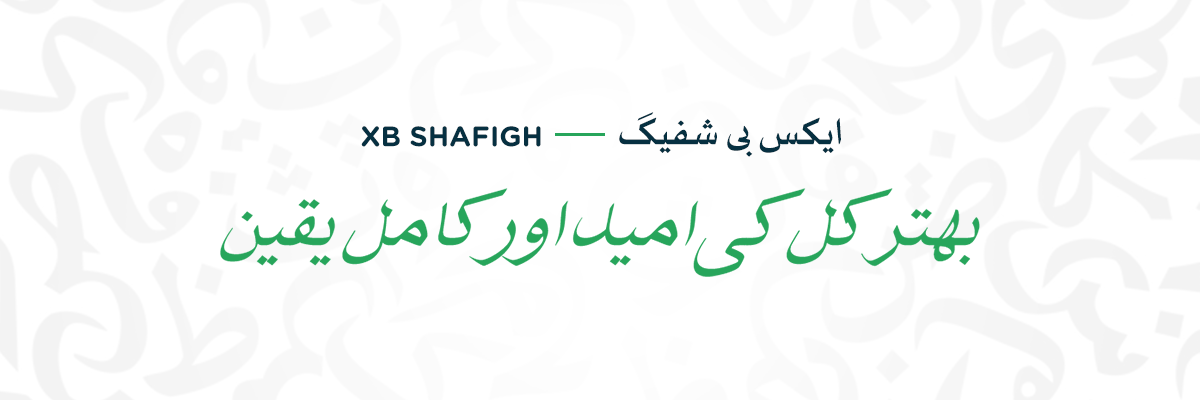
The XB Shafigh was created by Behnam and launched in October 2017. It is a pointy, flowing Arabic typeface family inspired by the Nastaliq script. The font has a geometric, modern design with pointy angles, clean lines, and constant proportions. Its well-crafted letterforms guarantee high legibility, making it useful for different applications. Having open counters, straight strokes, and constant stroke weight, the fonts maintain a horizontal emphasis with some wider letters. Furthermore, it is available in four different styles – Regular, Bold, Italic, and Bold Italic increasing its versatility. You can use it for editorial design, providing functional and clear typography.
Anwar
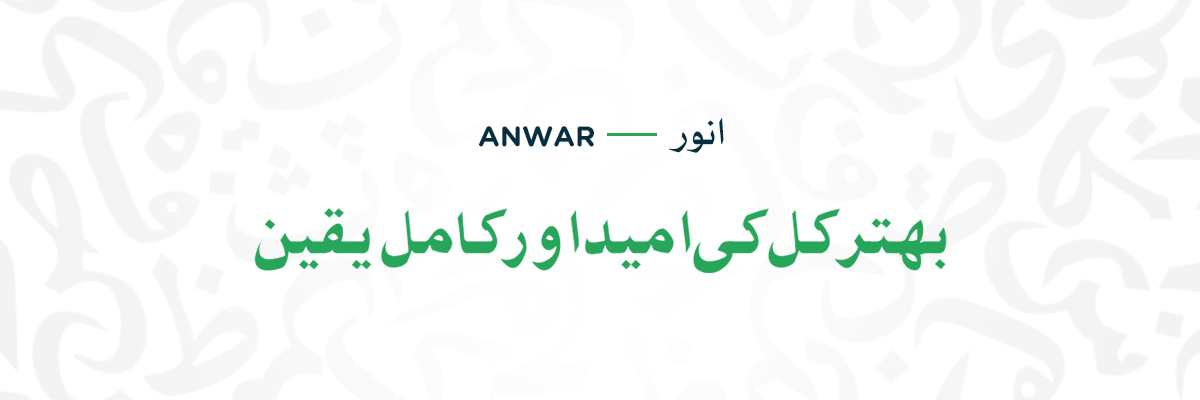
Anwar is designed by Syed Manzar Hasan Zaidi and is a TrueType Arabic font. The design of the font takes inspiration from the traditional Naskh style, combining Arabic calligraphy with contemporary elements. Its stylish design likewise features symmetrical, even letters with rounded curves and pointy edges, making it visually aesthetic for many applications. Due to the appealing design, you can use this font for different purposes while designing educational software or learning platform. With a huge character set of 444 and extensive glyph count, it shows compatibility for Latin, Arabic, and Greek languages.
Urdu Khat-e-Naqsh Nastalique
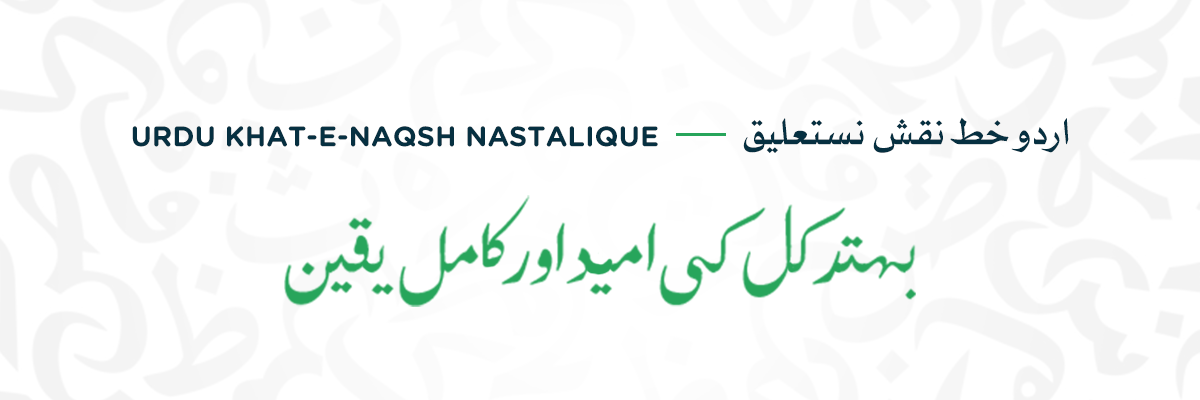
Urdu Khat-e Naqsh Nastalique was designed by Shehzad Ashiq Ali, a Pakistani designer. It is an attractive Urdu font with slanted, wide letters in a classic Nastaliq style. With thick, bold, and dynamic strokes, it is a good option to use for longer text. Despite its strong nature, it maintains high readability at smaller screens. Moreover, the font has rounded, thick curves, soft letterforms, as well as two-tipped long terminals. The overall appearance of this font gives a modern yet very traditional look. If you want to add a cultural touch in your learning software, with a sleek, dominant look, select this font to write body text. Nastaliq is a widely in-use Persian script in Pakistan for literary purposes, if you want to know more about its origin read more about Nastaliq: The Perso-Arabic Script.
Nafees
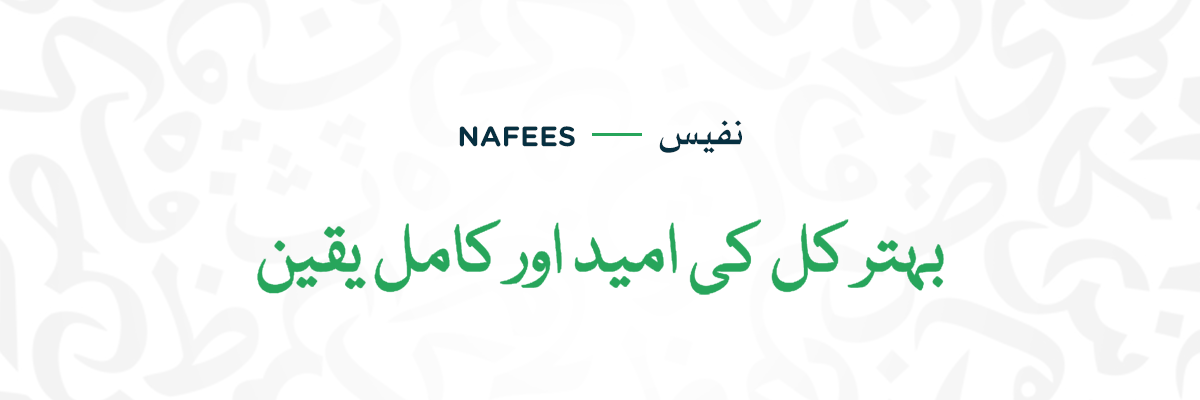
Nafees was made by Mr. Jamil-ur-Rehman and launched on 2nd June, 2017. With a thick and wide appearance, it is a contemporary Urdu font. The font is inspired by classic Naskh style with modern impact. It has thick, changing strokes but maintains a clean look with straight and vertical characters, sharp edges, and delicate corners for a visual appeal. Moreover, the high readability at smaller screens makes it appropriate for longer text paragraphs. The equal spacing and formal appearance provide a neat yet professional look for different designing purposes in various learning platforms.
Ahmed – Elegant Urdu Font For Educational Software
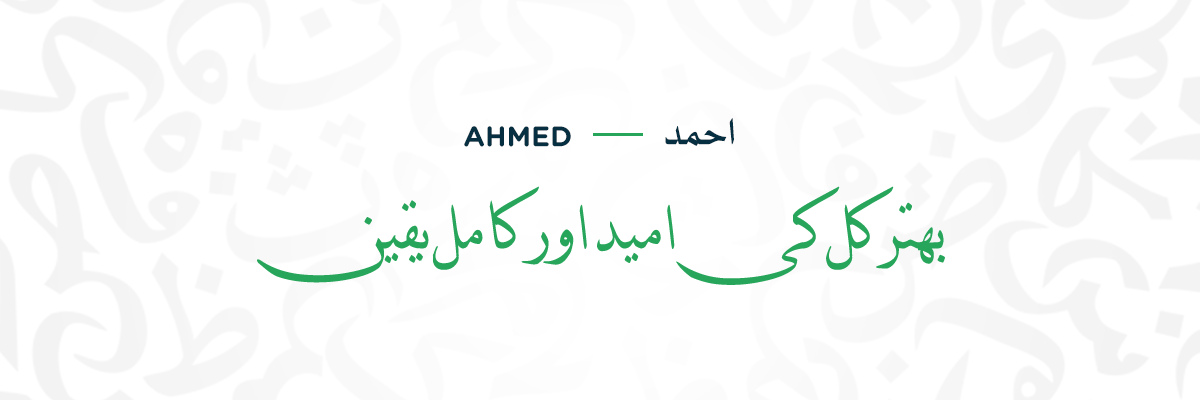
Ahmed is a TrueType Arabic typeface by Syed Manzar Hasan Zaidi in 2008. The font is popular for its elegant look and modern influences of the Naskh style. It shows compatibility for Urdu, Persian, Arabic, and more languages, providing ample design versatility. Moreover, it features elongated letterforms with soft corners and changing thicknesses that form contrast across ends and center strokes. This is a perfect font for those designers who want to add depth and feel in their text. Best for formal documents, invitations, signage, and projects needing emphasis and stylishness, its neat yet complex design elements improve visual appeal despite being accessible only in one font weight.
Sarem Marjan
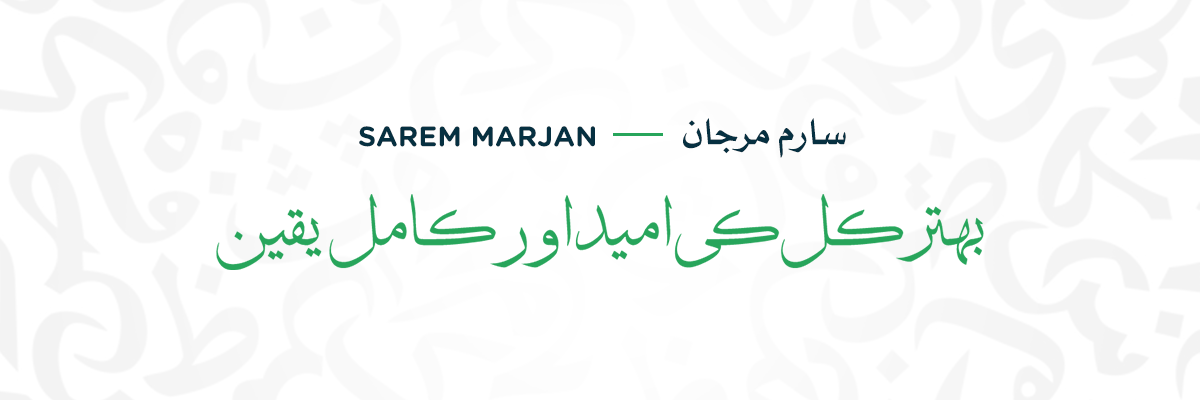
Sarem Muskan is the creation of a well-known font designer Sanaullah Mangnejo Sarem. It is a slanted and elegant Sindhi font considered by pointy, sharp letterforms and little zero spaces. The font takes its inspiration from the historical Nastaliq and Naskh scripts and has monospaced letters with clear, thin curves and sharp terminals decorated with some flourishes. Having strong strokes as well as changing thickness throughout, it is a versatile font for both short texts and long blocks. In spite of being available in one font weight, the simple appearance and wide Unicode support make this font a practical and visually aesthetic option for different typographic requirements.
Kaneez
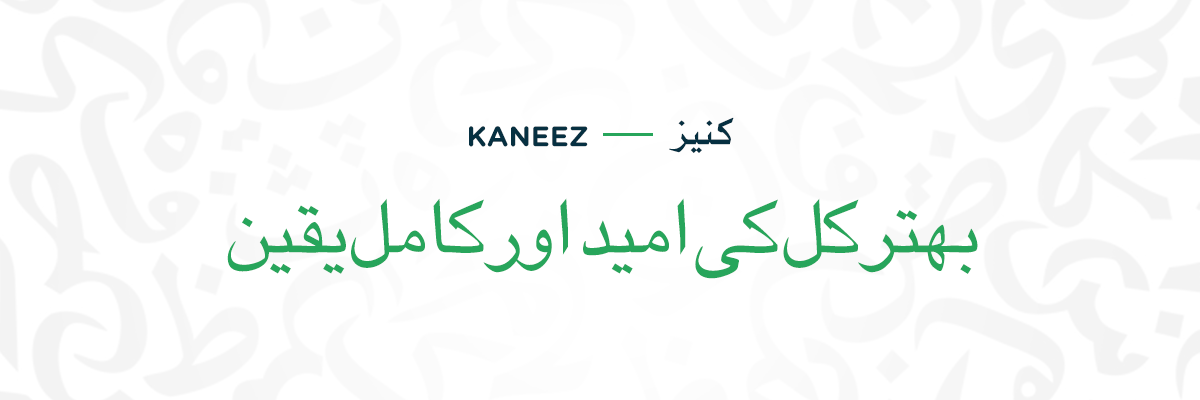
Released on 10th Oct, 2017, Kaneez was designed by Syed Manzar Hasan Zaidi. It is a modern Arabic font personalized for Qalam writing. The font combines Naskh script styles with contemporary influences. It is a monospaced font with moderate thickness. Having 497 glyphs and 444 characters, it can support Arabic, Latin, Urdu, and Persian languages. Moreover, the consistent thickness and soft strokes maintain good readability on screens, appropriate for longer text passages. It stands out with pointy edges, along with subtly left-tilted long letters. It is a best option to use for writing longer texts in your educational software because of its readability and functionality across wide design applications.
Bottom Line
The selected Urdu fonts for educational software can influence the learning of students. It is something you should wisely consider when preparing or selecting teaching materials for them. Remember that the size as well as the style of Urdu font is very important to engage students in learning. Above, we have discussed some of the best Urdu fonts that you can use. Some of them are bold to use for titles or headings. Few of them are perfect to write body text and some are a little decorative to add a stylish aspect in your software. I hope that this guide will be helpful for you.


